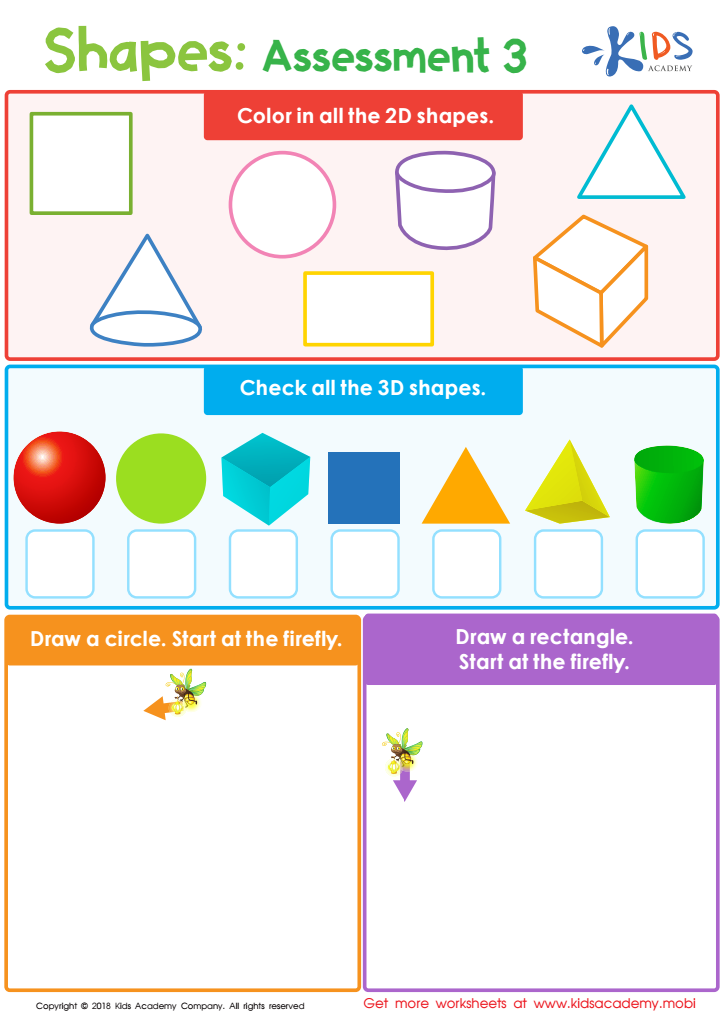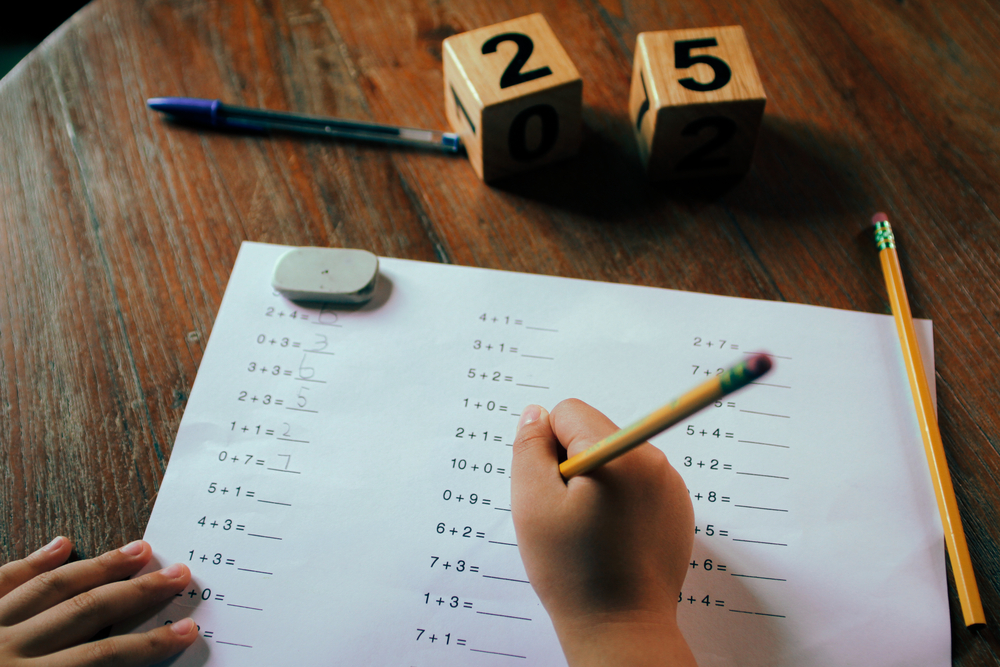Promotes mathematical thinking Worksheets for Kids
1 filtered results
-
From - To


Shapes: Assessment 3 Worksheet
Question/Answer
What does the Promotes mathematical thinking skill mean when it comes to Kindergarten Geometry learning?
Promoting mathematical thinking skill in Kindergarten Geometry involves encouraging young learners to recognize and analyze shapes, patterns, and spatial relationships. It means guiding them to understand and apply geometric concepts through hands-on activities, visual aids, and problem-solving tasks, thereby developing critical thinking, reasoning, and the ability to communicate mathematical ideas effectively at an early age.
How does the mastery of the Promotes mathematical thinking skill affect a student's performance at an early age?
Mastering the skill of mathematical thinking at an early age significantly enhances a student's performance by developing critical thinking, problem-solving abilities, and logical reasoning. This foundation not only improves their proficiency in mathematics but also has a positive impact across other academic subjects. Early mastery fosters a confident, analytical mindset, facilitating lifelong learning and academic success.
How to test a Kindergarten student’s Promotes mathematical thinking skills?
To assess a Kindergarten student's mathematical thinking skills, use hands-on activities and manipulatives. Ask open-ended questions to explore concepts like number recognition, counting, patterns, and simple addition or subtraction. Observe how they solve problems, ask them to explain their process, and look for their ability to apply concepts in familiar and novel situations.
 Assign to the classroom
Assign to the classroom











